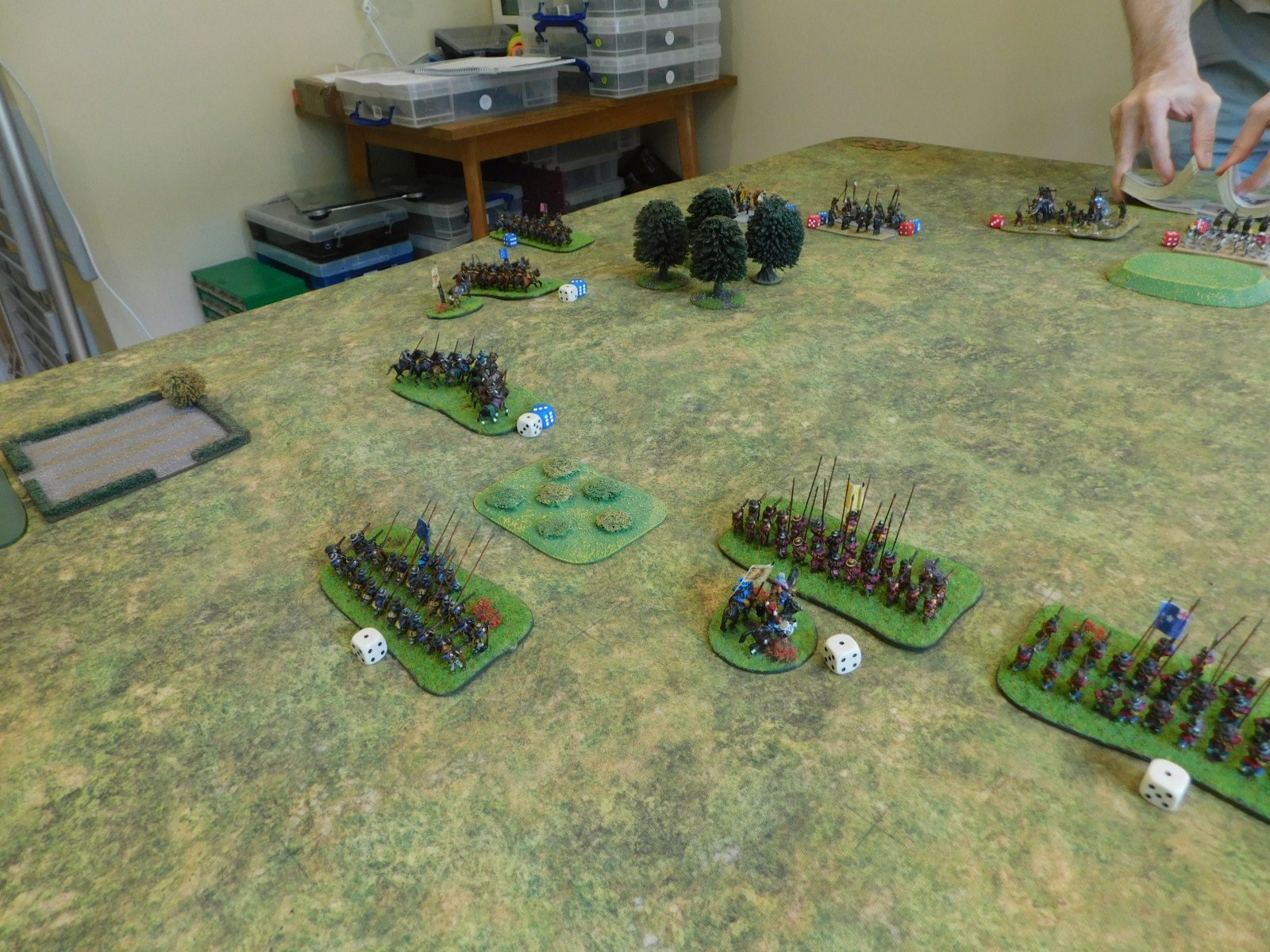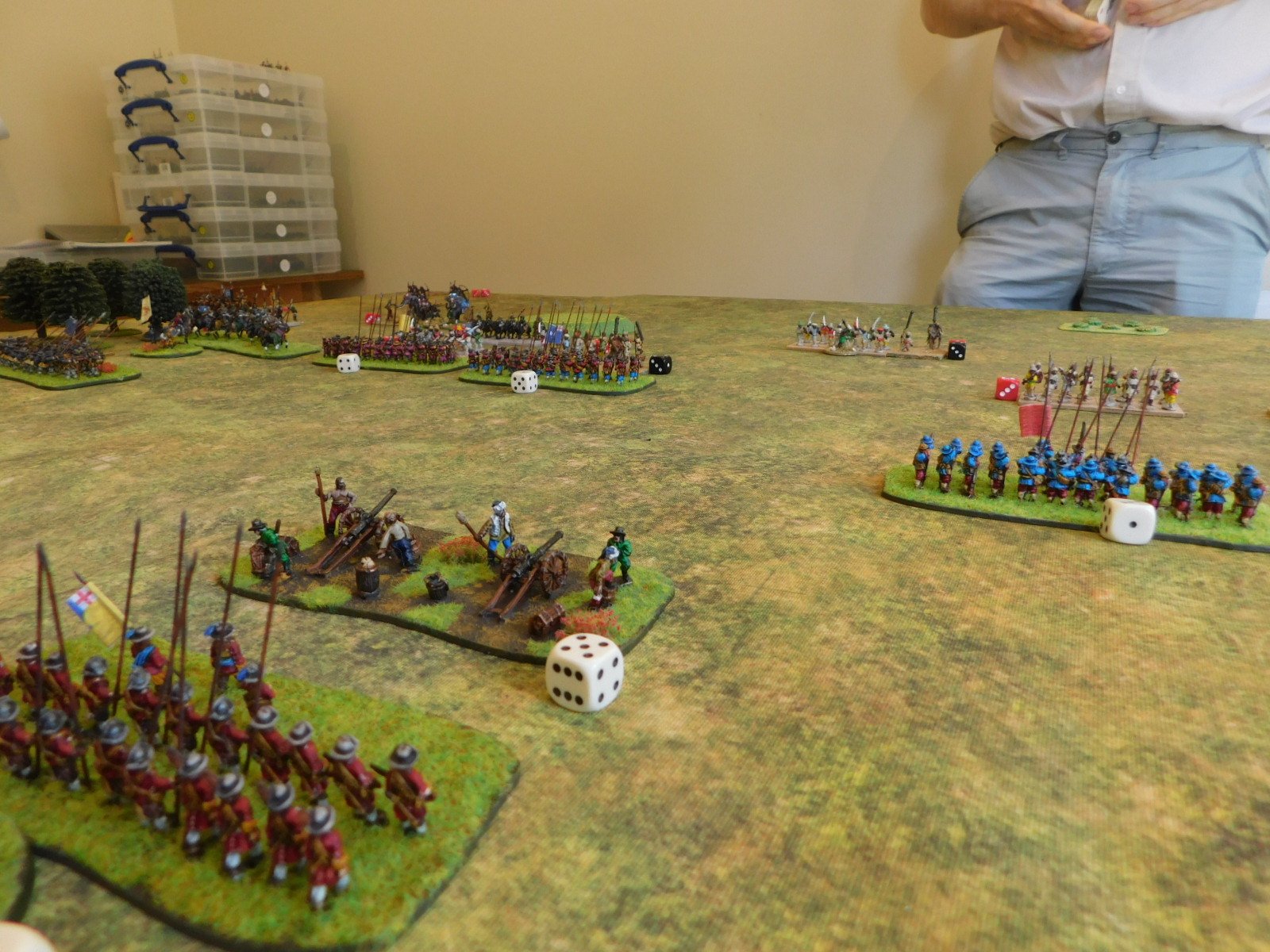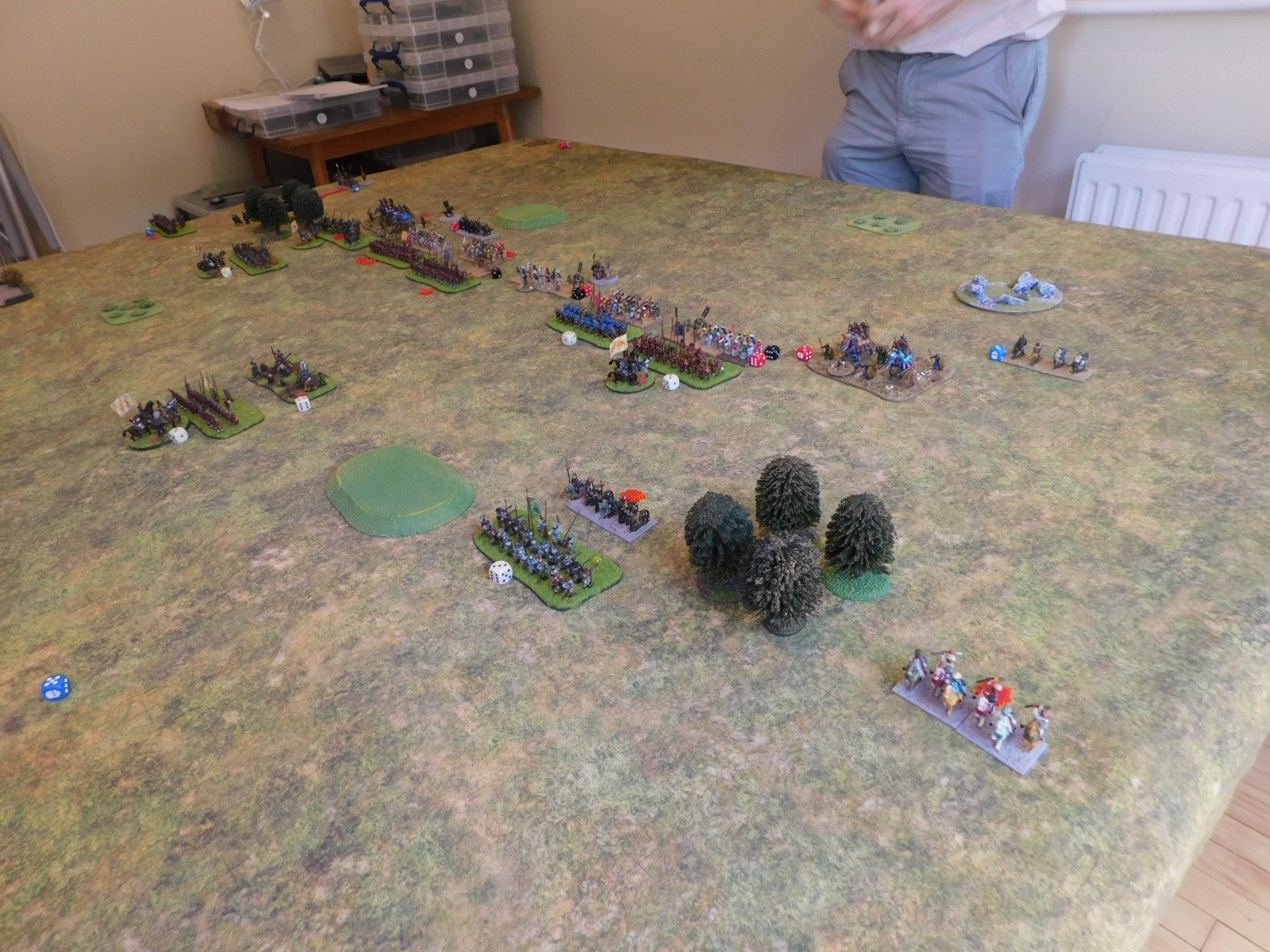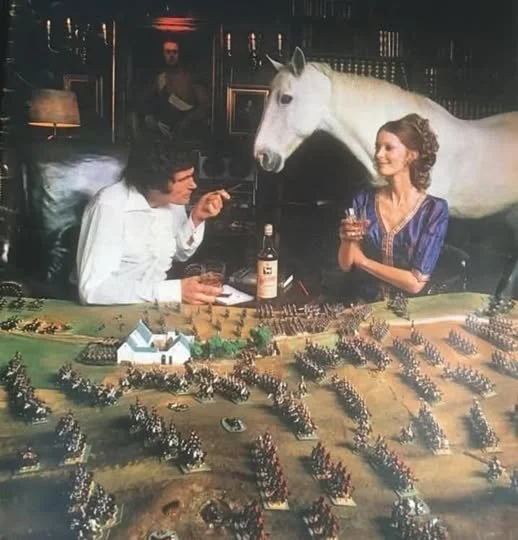FK&P AAR: Swedish vs Moghuls
/With the Moghuls having defeated the Cossacks in short order (see previous post) there was time to have another game. This time I thought that I would wheel out the Swedes: not sure quite how the contemporary but not contemporaneous Swedes and Moghuls would ever encounter each other…but then that’s the great joy of wargaming!
I was a bit more confident of victory this time: the Swedish army has a good mix of pike-armed infantry and decent Reiter horse: surely this would be enough to put the upstart easterners in their place!
The Swedes
The Moghuls
I drew up my Swedes in entirely the traditional manner: two brigades of infantry in the centre, a brigade of cavalry on each wing. My plan was to advance in a line and just get stuck in as soon as possible: my pike should be able to defeat his largely musket- or sword-armed infantry through reach alone!
The Moghul plan was to sweep his wings forward using weight of numbers to win the cavalry battle there, then curl in to take my main line in the flanks just as his main line hit them from the front.
His cavalry duly swept forward, with my cavalry advancing to meet them.
Left flank
Right flank
As the cavalry on both sides began their fight for dominance on the wings, the Swedes marched their infantry forward in the centre.
On the left wing, my cavalry were initially successful, and had a great opportunity to charge his main horse units in the rear by swinging around the small wood top left in the left hand picture above. Unfortunately, I drew a “10” for my first movement card, so got into the perfect position to launch the charge but just couldn’t actually charge before the way into the enemy cavalry’s rear was blocked by Moghul elephants.
Meanwhile, on my right wing, the cavalry clash had proved inconclusive. Both sides had lost multiple units, and things ended up with his cavalry technically ready to do more, but positionally unable to do so before the main battle lines clashed.
With the cavalry actions on the wings proving inconclusive, it was obvious that the battle would be decided in the centre. The two lines moved into contact and a grinding melee began.
As with most grinding melees, it was 50/50 who would win: the advantage I had from my pikes countered by the Moghuls slightly outnumbering me.
To cut a long story short, after a long series of to-and-fro clashes, I lost. At the end of the battle, the Moghuls had only three victory medals left, so if I’d broken one of his foot units before he broke one of mine, then I would have won.
All that was left in the centre of battlefield!
A great game, with the Swedes proving decidedly harder for the Moghuls to beat than the Cossacks!
Here’s a chronological, pictorial history of the battle:





























